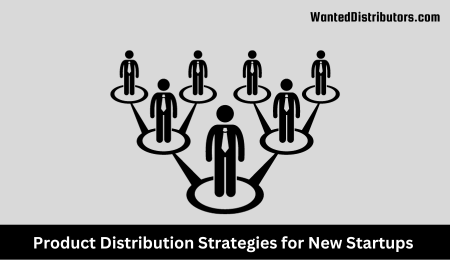Product Distribution Strategies for FMCG Startups in India
Big changes are happening in how things are sold across India. Things like state taxes and rules that made it hard to sell between states are gone now because of GST. This is good news for businesses that make or sell things.
Now is the perfect time to sell your products in more places across India. Your town or city might already have enough customers for your product. So, it’s a smart idea to look for new places where more people might want to buy what you’re selling.
If your product is popular in your local area, it could do well in other cities, states, or even in other countries. But how do you find trustworthy people to help you sell in these new places?
That’s where WantedDistributors.com comes in to help. They’ve already checked and confirmed a large number of partners who can help you sell your products. It’s like having a bunch of reliable helpers right at your fingertips.
But, even with this helpful service, you need to plan how to use it best. Here are a few things to think about as you decide how to make the most of WantedDistributor’s service:
Few Crucial Steps for Successful Distribution Channels
1. Global Vision, Local Approach: Your Entry Strategy Roadmap:
Embarking on a Pan India distribution journey is an admirable goal, but the key is to begin with a single state. The wisest choice for your initial focus is your home state. Take the first step confidently by delving into a market you are familiar with. Even if you already have distributors in place, uncover the untapped opportunities in your surroundings. Utilize WantedDistributors’s geographic search engine to identify distributors in your city, district, or state. Initiate conversations with them. Keep in mind that when you appoint a distributor, it becomes your responsibility to expand the supply chain to cover that area. What could be a more ideal starting point for enhancing logistics support to new distributors than your own state? Once you have established a strong presence in your home state, gradually extend your reach to adjoining states, ensuring a systematic expansion.
2. Prioritize Markets, Then Products: A Strategic Approach to Sales Success:
Recognizing that all markets differ in potential is crucial. Products positioned at the higher end naturally target more affluent customers, and this focus should align with your market research. For instance, if you’re selling specialized vegetable bags for refrigerators, prioritizing urban areas over rural ones makes sense, especially if power cuts are more prevalent in rural households. Utilize Wanted Distributors’s location-based search feature to pinpoint potential distribution partners in specific districts or states that align with your target markets.
Consider two critical factors influencing distributors’ choices: 1) Demand and salability in downstream retail markets, and 2) profit margins. Product category matters less to distributors unless there’s a compelling reason.
Don’t dismiss a potential distribution partner solely based on their current product line; instead, assess them based on their ability to meet demand and offer favorable margins.
3. Understanding Roles: Your Distributor Isn’t Your Customer:
Many manufacturers, especially new players in the distribution business, often make a critical error by treating distributors as just another customer. Absolutely not! A distributor is not merely a customer; they are an integral part of your extended family. It’s crucial to nurture and support distributors, especially during their early days, establishing a strong and lasting relationship. Keep in mind that the success of a distributor translates to a win-win situation – when they thrive, so do you. Embrace the understanding that the prosperity of your distributors directly contributes to your own success.
4. Clear and Equitable: Navigating the Path to a Fair Distribution Agreement:
When crafting a legal agreement, it’s essential to find a middle ground that considers both your interests and those of your distributor. Avoid tilting the agreement heavily in one direction, as it can harm the long-term relationship. For instance, if a manufacturer requests a security deposit, the distributor can, in turn, seek credit. Acknowledge the concerns and interests of both parties, striving for an unbiased and fair agreement. This balance becomes even more critical for smaller businesses, which often bear the brunt when a successful distributor leaves to join a competitor. Establishing fairness in agreements helps mitigate risks and fosters healthier, more enduring partnerships.
5. Boosting Your Allies: Why Distributors Need Marketing Support:
Marketing plays a pivotal role in driving product sales. While big companies invest in brand building through advertisements and promotions, small businesses face challenges due to budget constraints. However, there’s a solution. Take a stroll through a small grocery shop, and you’ll notice numerous lesser-known or even unknown brands sharing shelf space with established ones. These products wouldn’t be there if they weren’t selling.
The key to their success lies in local marketing efforts. For small businesses aiming to sell successfully, it’s crucial to provide marketing support to distributors. Manufacturers can achieve this by appointing sales staff or offering additional compensation to distributors to cover the costs of local marketing. This approach levels the playing field, allowing smaller brands to gain visibility and effectively compete in the market.
6. Streamlining Success: Developing an Effective Supply Chain Strategy:
As your distribution network expands, transportation and logistics costs naturally rise. To mitigate these additional supply chain expenses, consider consolidating operations by appointing more intermediaries like super-stockists and C&F Agents. While this may not be an immediate concern for manufacturers new to distribution, it’s crucial to keep in mind when appointing distributors.
When selecting target markets, think about future supply chain operations. The more your distributors are in close proximity, the easier it will be to manage them in the future. This strategic approach helps streamline logistics, optimizing efficiency as your distribution network continues to grow.
7. Finding Your Fit: Choosing Between Dealer, Distributor, Wholesaler, or a Blend:
The distribution channel is a network of independent businesses that partner with manufacturers or importers to deliver products from the source to the end customer. The alignment between these entities varies based on the purpose, and manufacturers or importers must choose the model that aligns best with their goals.
In the wholesaler model, wholesalers purchase products from manufacturers/importers and sell them to downstream retailers. While this offers manufacturers deep reach and regular cash flow, they have little control over consumers or market segments – it’s a “sell and forget” scenario. On the other hand, the distributor model involves distributors acting as an extension of the manufacturer, operating exclusively within a specified territory. Dealerships are a hybrid of wholesalers and retailers, functioning as high-end retailers directly under the manufacturer.
Additional models include various stockists and sub-stockists, introducing complexities when these intermediaries wear multiple hats. For instance, a distributor selling to retailers in one territory might have its own retail presence in the same or a different territory.
Each model requires manufacturers to make trade-offs between control, cost, margin, and reach. Striking a balanced mix is essential, and successful companies often adopt different models for different markets to effectively serve diverse consumer needs.

